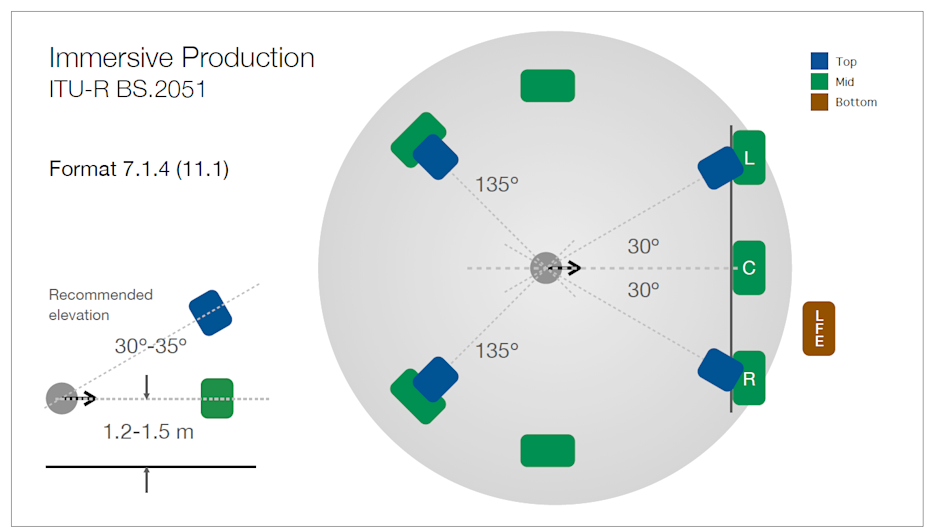Know Yourself

Compared to in-room reproduction, there are a host of variables unaccounted for when using headphones, and several of them relate to you as a person, mentally and physically. Personal insight cannot be described in words, or put down in a manual, but tools for experiencing and learning the differences are now available, if you wish to take the time and the journey to get to know yourself as a listener.
In natural listening, and considering mono loudspeaker playback, we hear a single sound source with both ears. Stereo reproduction is based on that same, natural principle, where the left loudspeaker also plays to the right ear and vice versa. Production even relies on this as a foundation, including recording with microphone arrays, EQ and level panning, and setting the faders in multitrack mixing.
International standards, based on natural listening, therefore govern stereo, surround and immersive production monitoring, to ensure predictable playback now and in future generations (see fig 1 as an example). Monitoring requirements also satisfy human perception with regards to active sensing (such as head and body movement), localization, envelopment and haptic (i.e. vibrational) cues, thereby keeping perceptual stress at bay as well.

Fig 1. Monitoring standard ITU-R BS.2051, used globally in broadcast and immersive music production.
Subjective calibration
With the introduction of the Aural ID plug-in, Genelec has set out to translate as many of these features as possible to headphone listening, without impeding monitoring standards, or by adding elements that only work under certain playback conditions. Moreover, with its direct reference to global norms, Aural ID’s extension of headphone capabilities gives universal and lasting value to the insight you gather.
Ear, head and torso physiology is personal, and is modelled in Aural ID via an accurate video capture method, but a subjective calibration step is required before you can trust the absolute sound colour of a pair of headphones, and use them as a complementary monitoring tool. The subjective calibration process is where personal understanding builds, and it should not be hurried. We therefore recommend coming back to it for subsequent refinement if time is short initially.
A fine in-room stereo monitoring system is the bedrock of subjective calibration. The principle is to compare the same sound at equal loudness, using either the in-room system or headphones conditioned with your AID profile, with the monitors positioned at +/- 30 degrees, with 0 degree elevation. Head tilt is personal, so in the procedure check if your elevation baseline might be slightly different than 0 degrees.
Regardless of whether your headphone-type is available in the Aural ID list or not, its response needs adjustment for professional quality performance. Aural ID has integrated tools for that, after which the result is relevant across stereo, surround and immersive formats. Once subjective calibration is completed, store a baseline preset for each specific pair of headphones you will be using.

Fig 2. Ultra-nearfield (UNF) reference setup based on calibrated monitors away from boundaries, ideally with the subject standing.
Getting anchored
Aural ID also models those personal cross-feeds that allow the left ear to hear the right loudspeaker and vice versa, as mentioned above - so subjective calibration is easier than with traditional headphones. However, to achieve neutral headphone listening, where the sound of a playback room is excluded, subjective calibration is best performed under nearfield or ultra-nearfield (UNF) conditions, using certain test signals and content you know well. My preferred setup is shown above in fig 2, where frequency response and level at the listening position is calibrated first. If possible, use a pair of Genelec ‘The Ones’ with phase linearity set to ‘Extended’, or alternatively other 8300 series models calibrated with GLM 4.1. Failing that, other monitor brands offering in-situ UNF calibration may also be used as an anchor for the learning and calibration process.
Finally, while this blog describes ‘bending’ headphones coherently towards in-room monitoring standards using Aural ID, bridging in the opposite direction is also possible. You get an excellent impression of how stereo content translates to both traditional headphones and to in-room playback using the same UNF setup shown in the illustration. So Aural ID really does help you know yourself as a listener, and know that moving seamlessly between monitors and headphones is finally a reality too.
About the Author

Thomas is one of the fathers of the loudness and peak-level measurement standards used widely from music production over streaming and broadcast to OTT. Perception has been at the centre of his professional life, working first as a physician and then in pro audio research. Thomas has written a number of papers; he is senior technologist at Genelec, and is the convenor of an EU expert group tasked with the prevention of recreational hearing loss.
